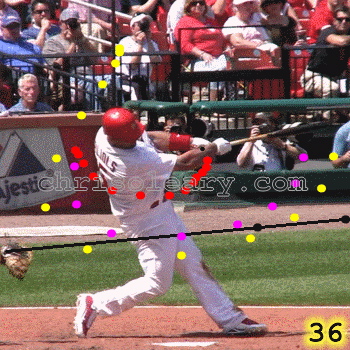- Oct 12, 2009
- 1,460
- 0
Slaught freezes the image of Pujols and draws a green line from the ball to the heart of the catcher's mitt. He then traces the inverted arc of Pujols's bat in red. On the other end of the phone, Slaught laughs in disbelief. "He's on plane with the pitch for about five feet!"...Slaught observes, the sweet spot of Pujols's bat stays inside the "big zone" for so long that even if he mistimes the pitch, he will still, in most cases, make contact with the ball."
I'm skeptical about the claim above.

The pink dot is the sweet spot.




